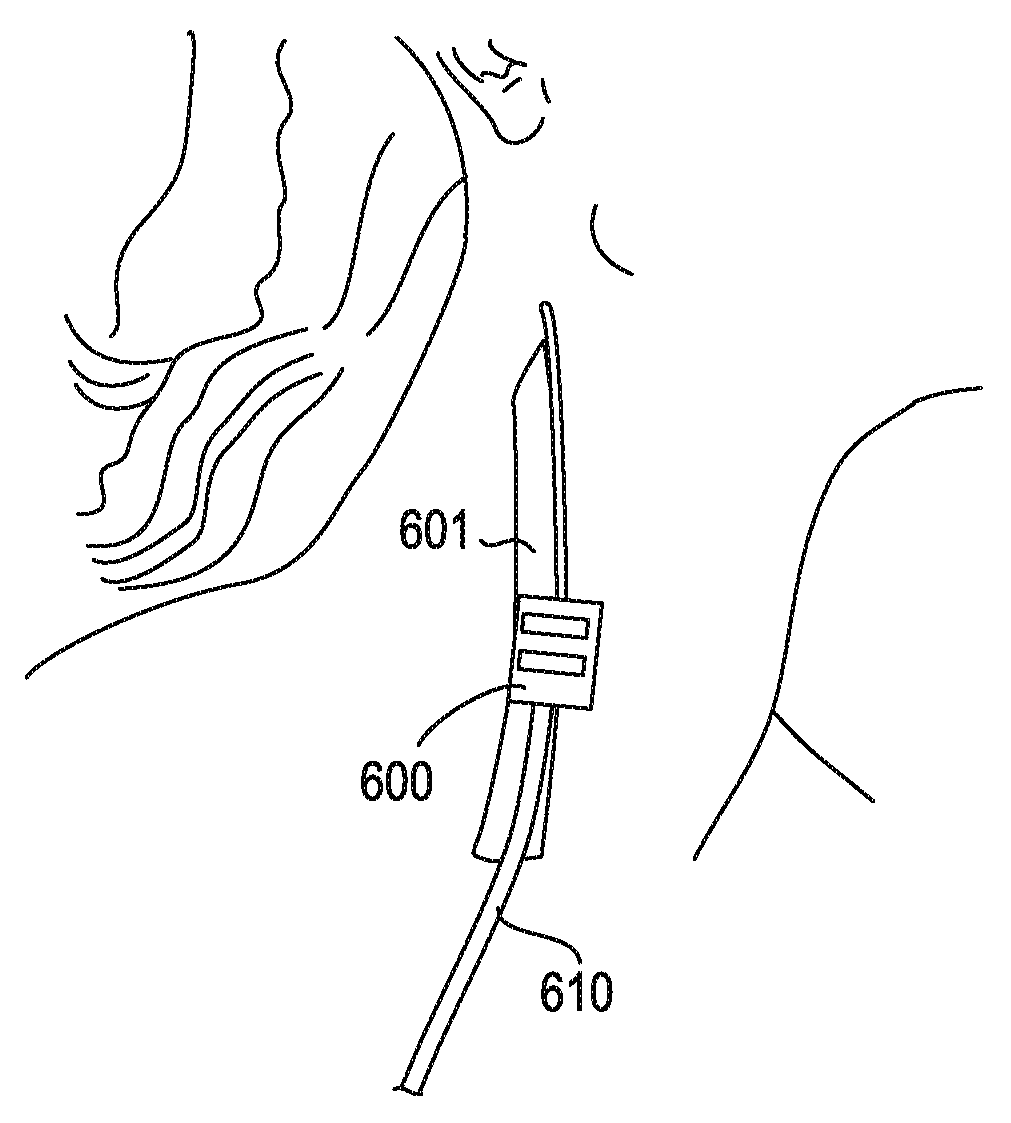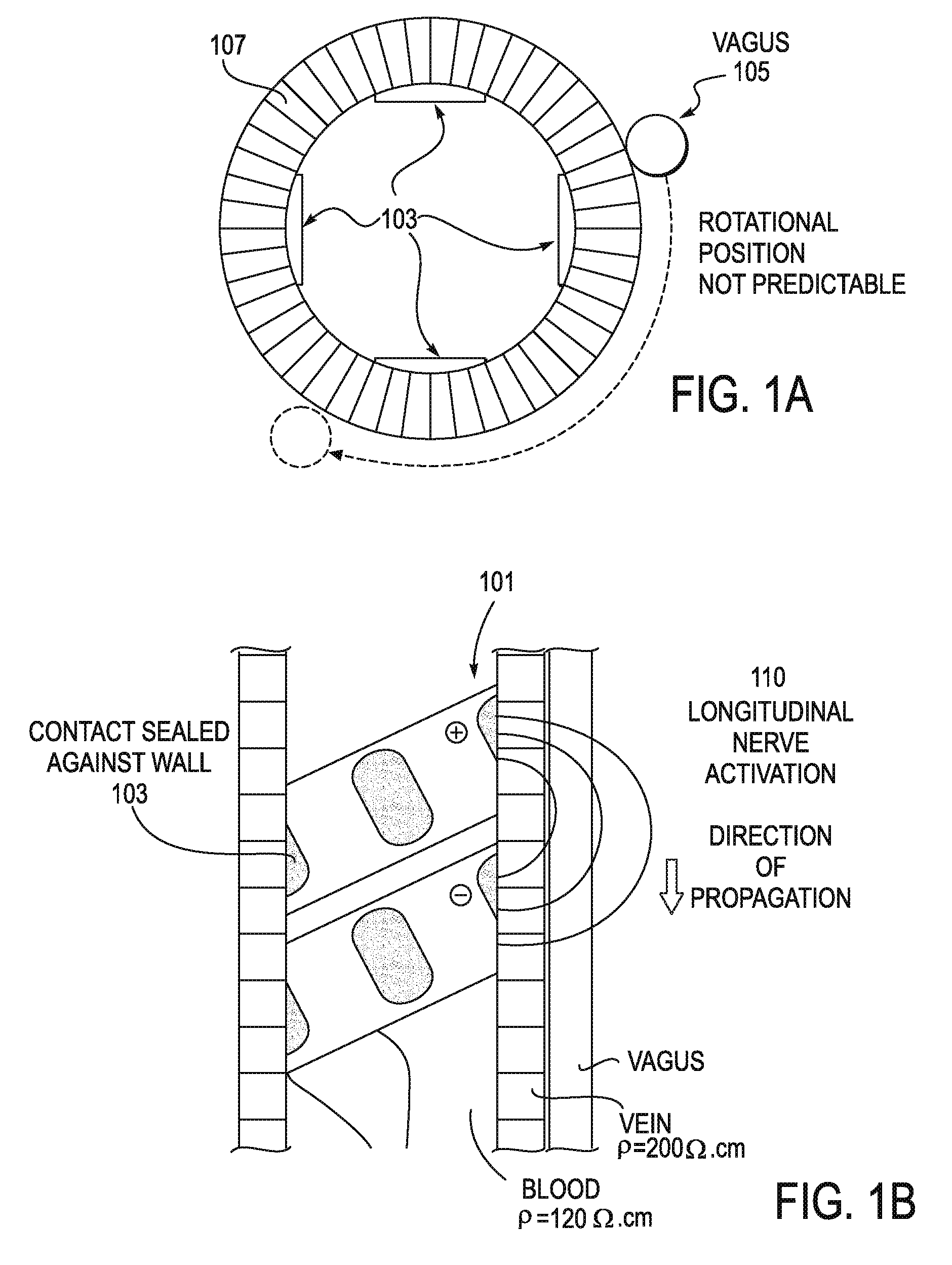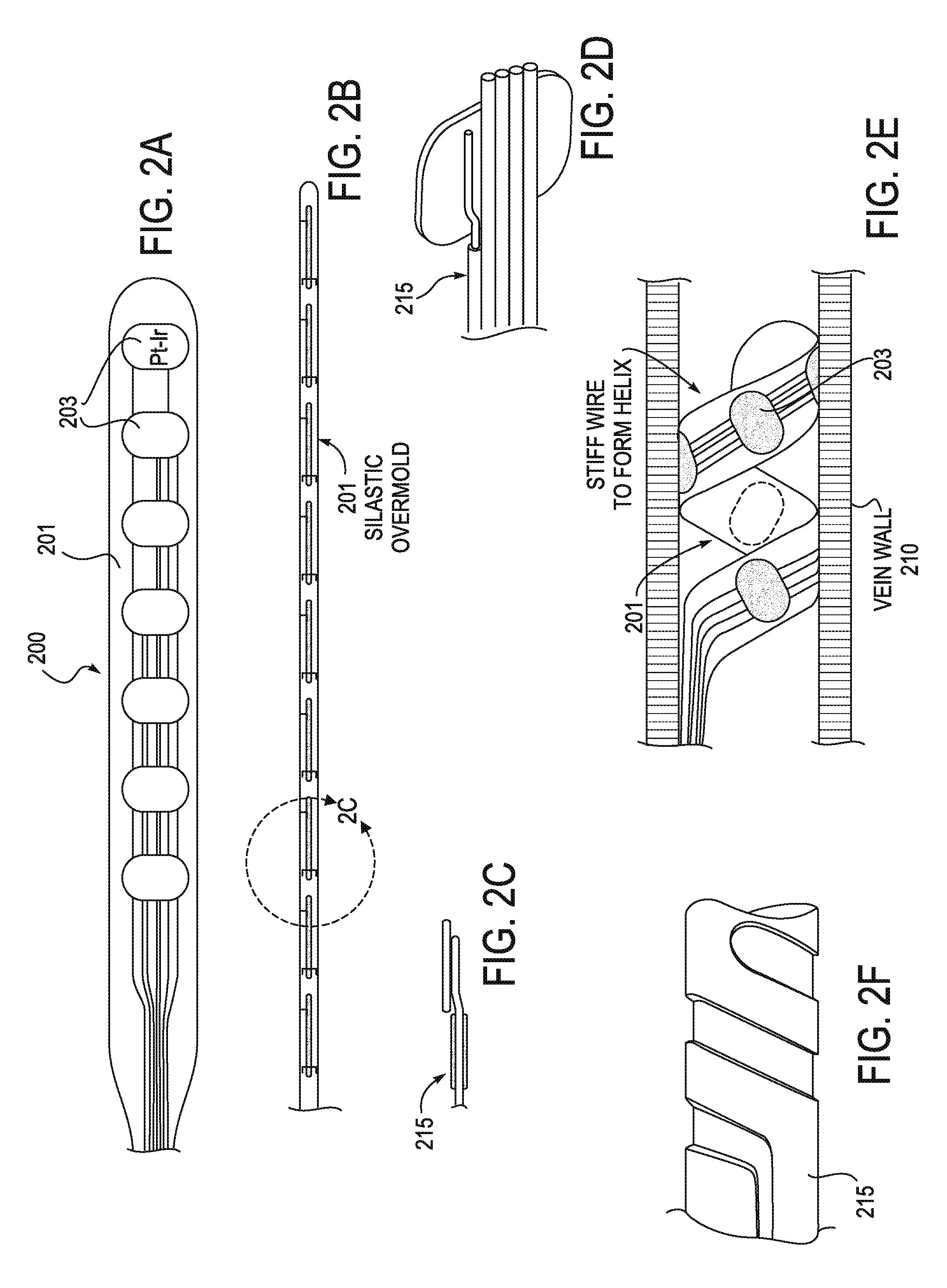Vagus nerve stimulation electrodes and methods of use
a vagus nerve and electrode technology, applied in the field of inflammation modulation, can solve the problems of inappropriate or unchecked damage to its own tissues, and the system of stimulation nerves of the inflammatory reflex such as the vagus nerve is generally not appropriate for the stimulation of the vagus nerve, so as to prevent the stimulation of surrounding tissue
- Summary
- Abstract
- Description
- Claims
- Application Information
AI Technical Summary
Benefits of technology
Problems solved by technology
Method used
Image
Examples
Embodiment Construction
[0044]The stimulator configurations and methods of inserting them, as well as systems including them are intended for use in modulating the inflammatory reflex, which may also be described as modulating the Cholinergic Anti-inflammatory Pathway (CAP). A stimulator may include a lead (e.g., an electrical lead) and a controller for regulating the energy applied to the subject by the lead. In some variations the stimulator may also include a power source or power supply providing power to the controller, and for acting as the source of energy applied by the lead. Since, in general, the energy applied to the CAP to modulate the inflammatory reflex is much lower than the energy applied to modulate other vagus effects (such as heart rate, blood pressure, intestinal response, etc.), the source of energy and / or the controller may be substantially smaller and more compact than existing vagus nerve stimulators, for example.
[0045]In general, the systems (e.g., a stimulator) described herein ma...
PUM
 Login to View More
Login to View More Abstract
Description
Claims
Application Information
 Login to View More
Login to View More - R&D
- Intellectual Property
- Life Sciences
- Materials
- Tech Scout
- Unparalleled Data Quality
- Higher Quality Content
- 60% Fewer Hallucinations
Browse by: Latest US Patents, China's latest patents, Technical Efficacy Thesaurus, Application Domain, Technology Topic, Popular Technical Reports.
© 2025 PatSnap. All rights reserved.Legal|Privacy policy|Modern Slavery Act Transparency Statement|Sitemap|About US| Contact US: help@patsnap.com



